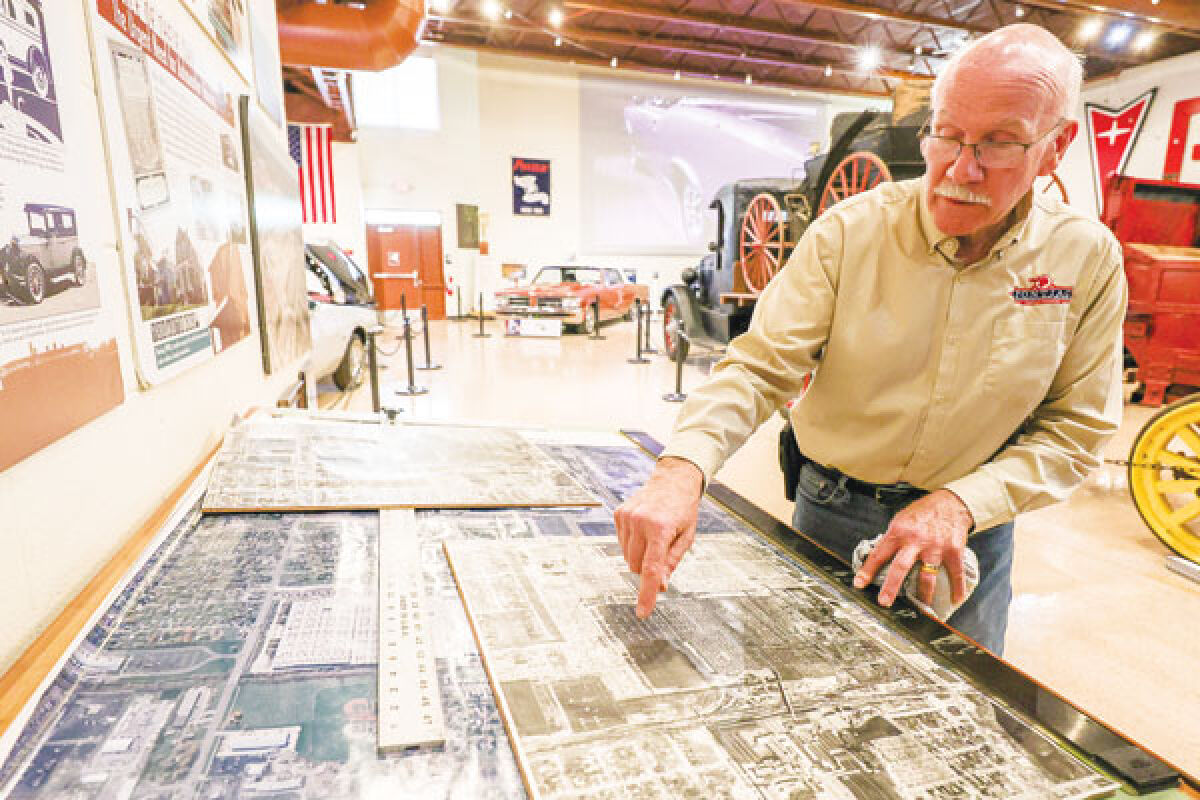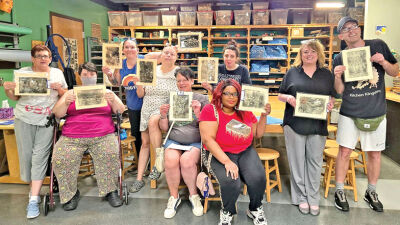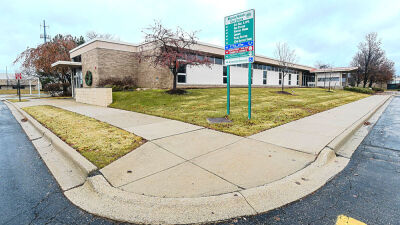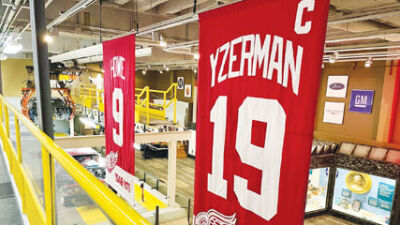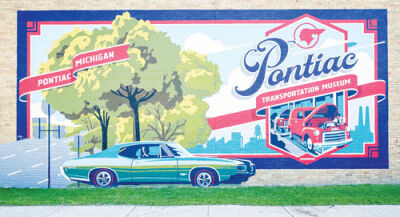
Through car displays and artifacts, the Pontiac Transportation Museum tells the story of the city’s contributions to the automobile industry.
Photo by Patrica O’Blenes
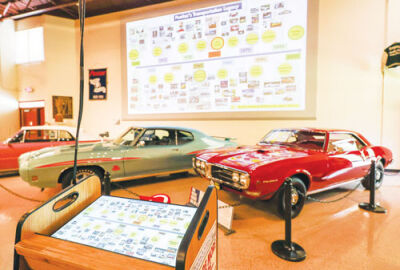
The Pontiac Transportation Museum, located at 250 W. Pike St., opened in May 2024. Its hours are 10 a.m. to 6 p.m. Thursdays through Saturdays and from noon to 5 p.m. Sundays. The public is welcome to attend.
Photo by Patrica O’Blenes
PONTIAC — Walking into the Pontiac Transportation Museum is like spending time in your grandfather’s pristine garage as a kid.
The museum is a leisurely walk back in time that pays tribute to the car manufacturers and assembly line workers who made everything from 19th century carriages to late ’60s GTOs in Pontiac-based automobile plants. That includes the Oakland Motor Car Co., Pontiac Assembly, the Pontiac Tractor Co. and GMC.
Memorabilia tells the city’s auto history, vehicles from different decades are on display, there’s a section dedicated to 50 years of Pontiac coach buses, visitors can view interactive videos, and much more. Volunteer docents are available to answer questions and take guests on museum tours. There’s also a gift shop that sells T-shirts, baseball caps, glassware and stickers.
“Our scope is basically wheel vehicles in Pontiac, either engineered here or manufactured here and or both. Forty-seven companies were here over time. We live in southeastern Michigan. Everybody is related to somebody that worked in the auto business,” said Pontiac Transportation Museum Board Chair Terry Connolly, a Rochester Hills resident. “The nice thing about opening the museum is people walk up almost every day with a box of stuff. You find some artifacts in there that are just amazing that people kept.”
The museum, located at 250 W. Pike St., opened in May 2024 with phase I of its installation. Just a year later, organizers will open the second phase of the museum on May 17, and the public is cordially invited to the “Phase II Fanfare” event.
The day will begin at 9 a.m. with a car cafe kickoff that will include free coffee, doughnuts and cider. Car buffs who drive classic Pontiac, Oakland and GMC brands are welcome to showcase their models on the museum grounds as space allows.
The museum will open at 10 a.m. with “Phase I” admittance prices. At noon, the event will switch gears with guest speakers and a ribbon-cutting to officially open phase II of the museum. From 1 to 5 p.m., the public can enjoy live music outside, and food will be for sale.
“We want people to be proud of what happened in Pontiac. We want to attract heritage tourism to Pontiac,” said Connolly, a retired automobile engineer. “There was a lot of wealth accumulation in Pontiac at one point in time. It happened because of manufacturing prowess and science and technology.”
There are bits of history throughout the museum that highlight all kinds of vehicles made in the city: carriages, sedans, station wagons, sports cars, convertibles, 18-wheeler trailers, medium-duty trucks, pickup trucks, and buses. Inside the museum is a 1908 Pontiac High Wheel Runabout, a 1912 Flanders Colonial Electric, 1968 Pontiac Firebird Ram Air II, 1940 GMC pickup truck, the very last Pontiac 2010 G6 sedan and more.
“Pontiac had 80% of the transit market in the whole United States for about 40 years,” Connolly said. “The Department of Justice didn’t take kindly to that and took GM to court for about 10 years and said, ‘It’s a monopoly, you’ve got to break it all off.’ So GM sold it all off, but most of the transit buses in the United States were built in Pontiac.”
Also on display are Whizzer motorbikes, which ran on gasoline and became popular during World War II.
“Gas was rationed, and women began working at plants,” Connolly said. “They all bought Whizzers” to get to work. The Pontiac manufacturing plants also supplied vehicles during World War II, including DUKWs, antiaircraft guns, armored cars, torpedoes, parts for tanks and landing craft and artillery ammunition.
In another site, volunteers placed two cars next to each other that represent the beginning and end of manufacturing in the city: a 1927 Landau sedan and a 1982 Grand Prix. Guests might also spot the 21-foot 1986 Vixen recreational vehicle on exhibit. Only 587 models were produced in 1986-1987 at the Vixen Motor Co.; they really didn’t generate much interest.
“My assessment is it was too expensive for its market in the mid-’80s because you could buy a bigger motorhome for the same amount of money,” Connolly said. “These were built right next door to where the Silverdome used to stand.”
The Pontiac Transportation Museum was built inside the former Crofoot Elementary School. Private donors have funded the museum along with support from the city of Pontiac’s Arts and Culture American Rescue Plan Act grant of $250,000. Since opening last year, the PTM has welcomed about 5,000 guests from 16 countries and nearly every U.S. state.
A list of admission prices is on the PTM website at pontiactransportationmuseum.org/visit. Information regarding donation opportunities also is available on the website. School groups are welcome for tours.
 Publication select ▼
Publication select ▼